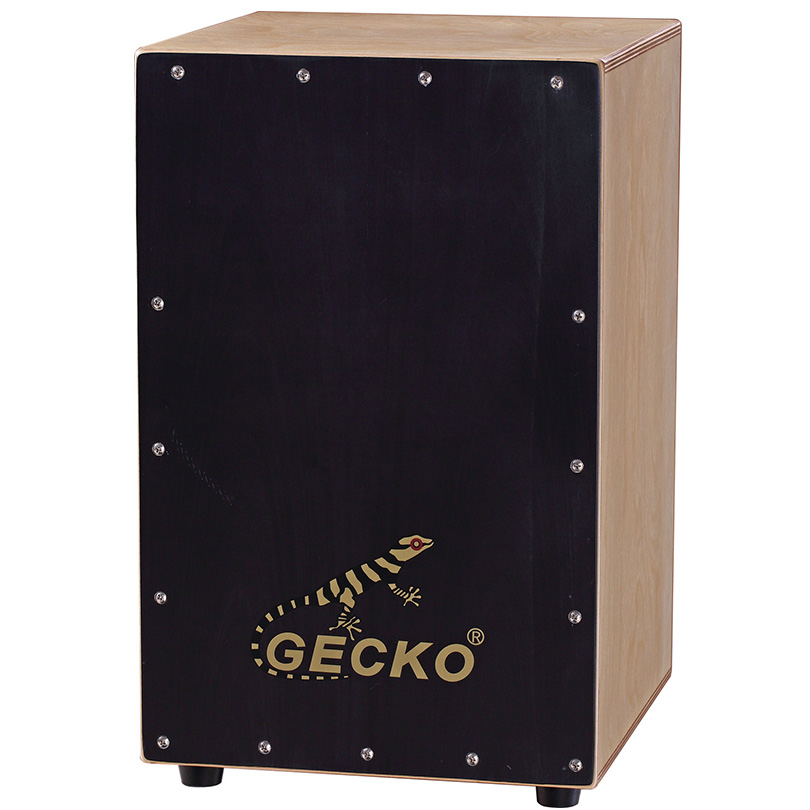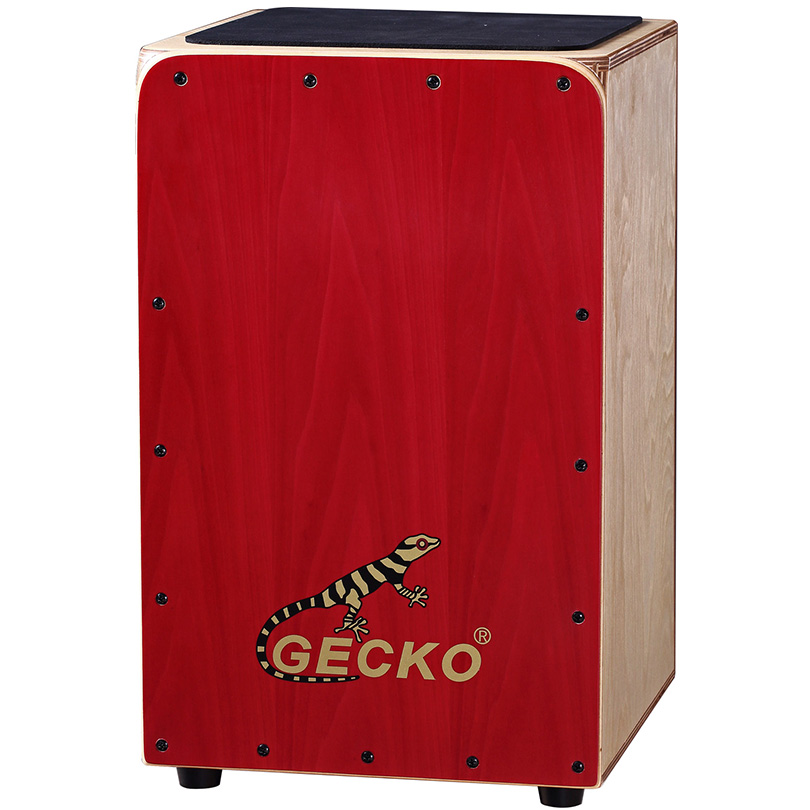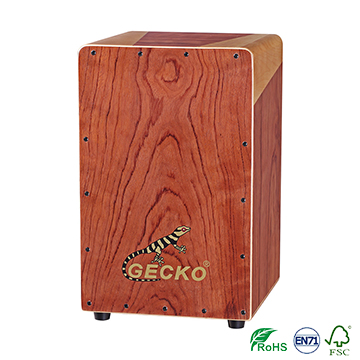What else do you need to know about the fundamentals of the acoustic drum cajon?Here, GECKO cajon drum takes you to learn more about cajon drum.
A drum set may be a percussionist's throne.
You pick up the drumsticks, and it's you, not the guitarist, lead singer, or bassist, that drives the song forward. you retain the tempo and you set the tone.
As epic as drum sets are, they will be quite hassle to move , assemble, and squeeze into a tighter gig or open mic settings.
So what's an honest alternative to a drum set?
A cajon drum is an efficient and convenient substitute to the drum set.
Let's take a glance at the a number of the advantages a cajon drum offers, and what to believe while shopping around.
What is a cajon drum?
First things first, let's tackle what a cajon drum actually is.
A cajon drum may be a box-like instrument that the percussionist sits on and uses their hands, palms, and fingertips to make sound. The instrument is comparatively 18 inches tall and 12 inches wide.
It may sound a touch primal, but the tones you'll achieve with a cajon drum are remarkable.
Cajon drum's are made from hardwood and an additional layer of plywood that's nailed to the designated "front" side. This front striking surface (known because the face or tapa) where you hit your hand determines the tone that's emitted.
Basically, you'll hit the cajon drum almost anywhere on its face, and you will produce a singular sound. A circular hole is cut out of 1 of the edges , which is where the sound escapes, and this side is usually behind you.
The size and weight of a cajon drum make it an exquisite instrument to be ready to travel and spontaneously perform with. The more you get an opportunity to fiddle with it, you'll feel comfortable enough to tug it abreast of stage with you and learn all the sounds it can create inside and out.
cajon drums originated in Peru and are prominent in Flamenco music, however, they're becoming more popular during a sort of genres like folk, rock, jazz, pop, and more.
How to Play the cajon drum | the way to Sit on the cajon drum?
You want to form sure that you're playing the cajon drum during a way that's comfortable and can not cause any injury.
The most common thanks to play the cajon drum is by sitting on top of it and reach over the front to smack the face. Some percussionists prefer to sit behind the cajon drum on a chair and straddle it with their upper body while they perform. Others will tilt it inward as they play. one among the cool aspects of the cajon drum is that the fact it's hospitable various styles.
It's important to seek out out which works best for you.
For health and safety, it's important to stretch before performing and intermittently throughout. Posture is additionally something you'll be wanting to stay in mind. Keep your back straight instead of hunched over, but don't keep things too tense.
While keeping your back reasonably straight, you'll be ready to reach all the parts of the cajon drum face that you simply got to (including the lower bass tones).
Look Into Playing Style
While the cajon drum is superb at creating surprisingly loud and crisp percussion, take a while to know the various tones which will be utilized while playing.
Even though you do not have a gran casa , snare, or high hat, it doesn't mean that you simply are completely limited. the 2 primary tones you'll produce are:
Bass Tones
High Tones
The bass tone is made by striking the face (front section) of the cajon drum about half a foot down. The lower section of the cajon drum will resonate, and a deep, solid bass tone are going to be emitted. Learning to hit the lower a part of the cajon drum to succeed in those bass tones can initially be a touch tricky, as you will have to succeed in down while still keeping a uniform rhythm. But, like everything else in life, practice makes perfect.
To achieve the high tone, you'll tap the upper corners of the cajon drum. By doing so, there's less vibration, and therefore the pitch are going to be above hitting the center or bottom of the cajon drum. The resulting sound imitates that of a snare .
You can fiddle together with your palm orientation and finger use to make dynamics and different rhythms that are more staccato or muted. All of those stylistic options are often learned and discovered by familiarizing yourself with the instrument.
Aesthetics are a compelling quality in our world. Looks, however, are often quite deceiving if you do not take necessary precautions.
When shopping around for a cajon drum, you'll spot one with a beautifully painted, crafted, or decorated face. Without a doubt, there are some beautiful looking cajon drums within the world. But does that implicitly mean that it plays better or features a better sound than a less flashy cajon drum?
An important factor to think about is what wood the cajon drum is formed of.
The type of wood used can make two identical appearing cajon drums sound entirely different. One may have a deep, rich tone that resonates well, while the opposite features a dull tone, buzzing, and poor projection.
Birch, oak, and pine are typically good sources for a well-manufactured cajon drum. That's to not say the other cheaper wood can't make a fine instrument; you should not rule anything out. the foremost important thing is to undertake it out for yourself before making a choice . it is also not a nasty idea to bring a lover to play it so you'll hear what it seems like on the receiving end.
If you're a craftsman, you'll always consider building your own cajon drum, too.
When purchasing a cajon drum, don't overlook a case. like all instruments, cajon drums are susceptible to travel wear and tear. To prolong the lifetime of your cajon drum, you'll be wanting to offer it adequate protection.
Above content, hope to have certain help to you.If you don't understand, please contact us. We are the Gecko cajon drum instruments from China.
Searches related to acoustic drum cajon:
Video for acoustic drum cajon:
Read more news
Post time: Mar-18-2021



